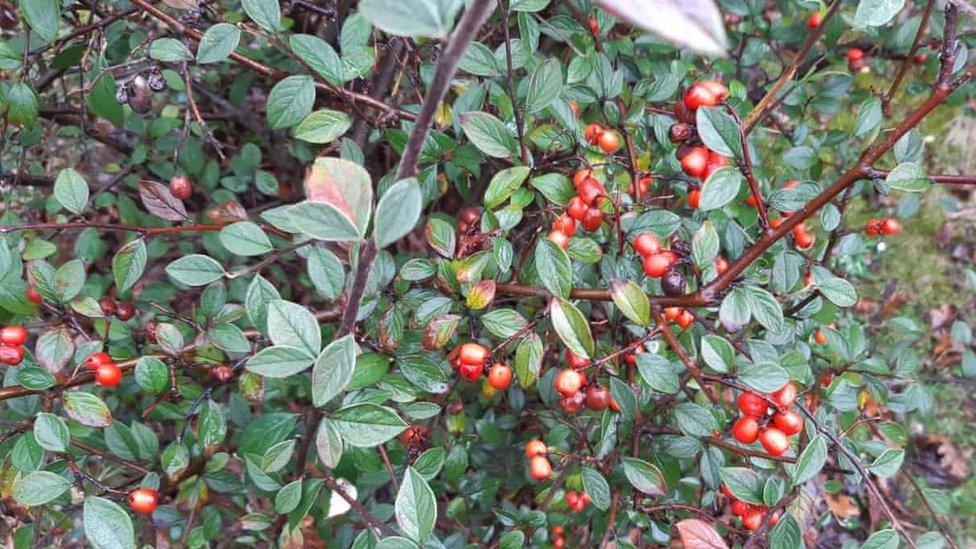Climate change: How this hairy 'super plant' is helping fight pollution
- Published
- comments

Cotoneaster hedges planted beside busy roads are 20% better at soaking up pollution than other shrubs
Say hello to the bushy, hairy-leafed 'super plant'! Yep, you read that right - A HAIRY SUPER PLANT!
This road side hedge might not look that miraculous, but it's silently fighting the good fight against air pollution.
It's super-hedge skills have been discovered by scientists at the Royal Horticultural Society (RHS) who looked at the effectiveness of hedges for soaking up air pollution.
They discovered that the hairy-leafed cotoneaster (or 'super plant' as its fun nickname) can help soak up pollution on busy roads and ease environmental problems.
The study compared different types of shrubs, including cotoneaster, hawthorn and western red cedar.
What else do we know?
WATCH: What's air pollution and why's it so important?
A recent YouGov survey found that 33% of people were affected by air pollution but just 6% are taking active steps in their gardens to reduce it.
86% of the people surveyed by YouGov said they cared about environmental issues and 78% worry about climate change.
The RHS is working to do something about this and is encouraging people to think about the benefits of helping their garden and green spaces. The charity is also tackling environmental problems such as air pollution, flooding and heatwaves.
And researchers discovered that on roads with heavy traffic, the denser hairy-leaved Cotoneaster franchetii was at least 20% more effective at soaking up pollution compared to other shrubs.
However, it did not make a difference on quieter streets.
Lead researcher Dr Tijana Blanusa said: "On major city roads with heavy traffic we've found that the species with more complex denser canopies, rough and hairy-leaves such as cotoneaster were the most effective."
"We know that in just seven days a one-metre length of well-managed dense hedge will mop up the same amount of pollution that a car emits over a 500-mile drive," Dr Blanusa added.
She went on to say that it would be good to plant cotoneaster along busy roads where pollution levels are high. A mix of shrub species should be used in quieter areas where encouraging nature is important.
Vehicles release harmful gases into the air we breathe. Air pollution can shorten lives and damage the quality of life for many people
Professor Alistair Griffiths, RHS director of science and collections, said: "We are continually identifying new 'super plants' with unique qualities which when combined with other vegetation provide enhanced benefits while providing much needed habitats for wildlife.
"We've found for example that ivy wall cover excels at cooling buildings and hawthorn and privet help ease intense summer rainfalls and reduce localised flooding.
"If planted in gardens and green spaces where these environmental issues are most prevalent we could make a big difference in the fight against climate change."
- Published14 December 2020
- Published30 April 2020
